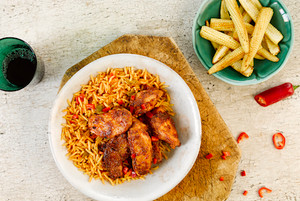
Anyone who travels to Japan will quickly learn two things: food is a very serious business, and Japanese cuisine isn’t all sushi and rice. Describing Japanese food in a nutshell is tricky. For one, although it’s a relatively small country, Japan is blessed with an exceptionally rich variety of diverse ingredients and cooking styles. But Japanese food is also unique among the great cuisines of the world in that only small amounts of oils and spices are used. It also has a strong focus on fresh and seasonal ingredients - what you see in markets there in January can be quite different from what you’ll see in July. Although many “local” ingredients are readily available across Japan today, and some regionalised dishes have spread throughout the country, some areas - and even cities - are famous for unique flavours and signature dishes.
Hokkaido
Japan’s northern island of Hokkaido is known for its dramatic landscapes, great skiing, and Sapporo beer, but in culinary terms, it’s dubbed the “Treasure House of Food” by the Japanese. As the dairy capital of Japan, one “must-try” is ice cream. Forget chocolate, vanilla or strawberry, though. In Hokkaido, common flavours including bean, potato, lavender and pumpkin, but the most popular is green tea topped with red bean sauce and sprinkled with crushed corn flakes. Ask any local and they’ll also tell you that Hokkaido is famous for delicious ramen, and the variations found in Sapporo are arguably the best in Japan. The difference? Sapporo ramen is made with miso beans rather than soy sauce, and the noodles are thicker, which aficionados say gives the soup a better texture.
Tokyo
Japan’s capital city is situated in the Kanto region, and is a place where anything culinary is possible. But top of the list of dining experiences for many visitors remains its sushi and sashimi. Conveyor belt sushi was invented in Osaka, but it’s hard to beat the freshness and diversity on offer in Japan’s capital city - thanks largely to the famous Tsukiji Fish Market. Aficionados swear by the sushi shacks surrounding the market. They serve the freshest sushi in town at reasonable prices, and the opportunity of witnessing a real-life wholesale market in action is well worth the hazard of dodging motorised carts hauling live octopus on the way in. Unique to Tokyo, however, is chanko nabe, and it’s famous as the food that gives the giant athletes of sumo their bulk. It isn’t a style of cooking as such but a style of eating; a nabe hot pot is brought to the table, filled with meat or seafood and vegetables, and then cooked in a delicious broth using a portable burner.
Osaka and Kyoto
Both are situated central Japan, but as cities go they couldn’t be more different. Osaka is modern and commercial, but as any local will tell you, it’s the ultimate “gastronomes'’ town. There are many dishes unique to Osaka, including noodles and takoyaki - balls of fried dough stuffed with octopus. But one local dish which has spread throughout the country is okonomiyaki, a savoury pancake sometimes called a Japanese pizza. Okonomiyaki literally translates to “cook what you like”. It’s made from eggs, and stuffed with chicken, pork, beef, octopus, or cabbage, cooked on a griddle at the table, and served with a rich, brown sauce and fish flakes.
In contrast, Kyoto is the cultural heart of Japan, and draws 40 million visitors a year to see its ancient temples, Shinto shrines, and enigmatic geisha. But Kyoto is also famous for tofu - and for good reason. Thanks to an abundance of underground springs, the city has pure, soft water - an important element in making tofu - and some of the country’s best quality soybeans are grown locally. Tofu appears in a myriad of dishes here, and in a variety of styles. From miso soup and hot pot, to chilled, simmered, grilled and deep fried, it’s a vegetarian culinary experience you won’t find anywhere else.
The Weird and the Wonderful
Tohoku region: jappa-jiru is a soup made from vegetables and the guts of salmon or cod.
Eastern and Central Honshu region: inago no tsukudani is a type of grasshopper stewed in sweetened soy.
Kyushu region: hakata ramen is served in a milky white stock made from pork bones, and comes with unique toppings such as pickled ginger, or pickled greens.
Okinawa region: goya chanpuru is made from the bitter goya melon, stir fried with other vegetables, tofu and either thinly sliced pork belly or canned tuna.
- By:
- Ben Hall









